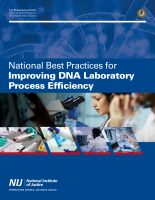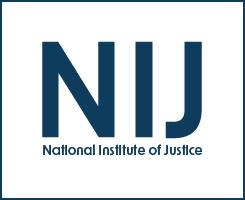Best practices
A Landscape Study of SOPs to Collect and Process Arrestee and Convicted Offender DNA Samples
Conference Proceedings: 2018 Impression Pattern and Trace Evidence Symposium
NPS Discovery Toolkit
Non-random Study Attrition: Assessing Correction Techniques and the Magnitude of Bias in a Longitudinal Study of Reentry from Prison
Conference Proceedings: 2015 Impression, Pattern, and Trace Evidence Symposium
Promising Practices for Using Community Policing Strategies to Prevent Violent Extremism: How to Create and Implement a Community Outreach Program
DNA Mixture Study: Novel Metrics to Quantify the Intra- and Inter-Laboratory Variability in Forensic DNA Mixture Interpretation
Pilot Evaluation of K-12 School Security Professionals Online Training: Understanding Trauma and Social-Emotional Learning
Cannabis Legalization and the Policing of Boating Under the Influence in the State of Washington: Exploratory Research on Marine Officers’ Perceptions
Booker and Beyond Analyzing Sentencing Reform and Exploring New Research Directions
This webinar features a discussion of previously published research on the U.S. Supreme Court’s 2005 Booker decision - which effectively transformed the United States Sentencing Guidelines from a mandatory, to an advisory, system. The presentation will address selected research findings from the last 15 years. Individual participants will briefly review their previous research findings with particular attention paid to the analytic methods used.
See the YouTube Terms of Service and Google Privacy Policy
Rapid DNA Crime Scene Sample Multi-Laboratory Evaluation Project
NIJ Announces $4.5M in New Funding for the Forensic Technology Center of Excellence
In January 2022, NIJ, a component of the Office of Justice Programs, announced $4.5 million for two new awards under its Forensic Technology Center of Excellence (FTCOE) program. The FTCOE program serves as the bridge between NIJ’s investments in research and development and forensic science laboratories, particularly at the state and local levels, by helping to transition products from those investments into operational use. In...
An Empirical Investigation of Organic Software Product Lines
NIJ-Funded Research on Mass Shootings to Advance Evidence-Based Policy and Practice
Mass public shootings continue to threaten communities in the United States, yet research on this criminal phenomenon is limited. In this full thematic panel, renowned experts will present a series of research projects summarizing NIJ-funded research projects’ newest findings on public mass shootings. The discussion will focus on NIJ’s investment to address the phenomenon of mass shootings through innovative study approaches to advance our understanding of mass shootings and inform prevention efforts. The implications of this research to criminal justice will also be discussed.
See the YouTube Terms of Service and Google Privacy Policy



